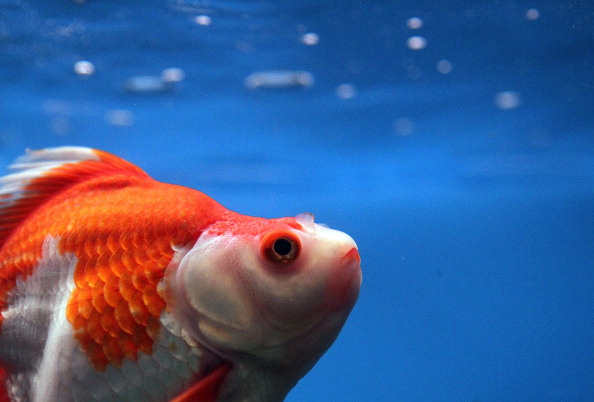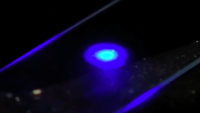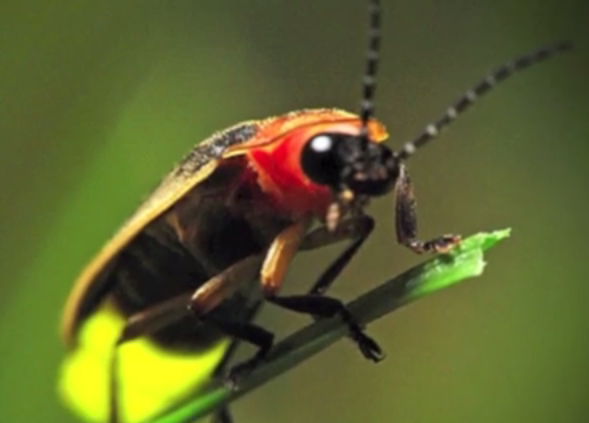How A Science Project Lead To Discovery Of New Firefly Species
| Quadey Humile | | Jun 29, 2015 05:00 AM EDT |
(Photo : Youtube) When 24-year-old Joshua Oliva went to do his usual insect hunting for a semester project, he never thought he’d make a significant discovery.
When 24-year-old Joshua Oliva went to do his usual insect hunting for a semester project, he never thought he'd make a significant discovery.
An undergrad student at the University of California Riverside, Oliva came across what he thought was an ordinary bug — a firefly — in Topanga Canyon, Calif., in mid-May.
Like Us on Facebook
He then presented his newly collected specimen to Entomology Research Museum senior scientist Doug Yanega , who identified the creature right on the spot.
"He ID'd it on the spot," said Oliva, according to The Orange County Register.
Turns out Oliva indeed found a firefly only that Yanega told him it was an entirely new species as it is said to be instantly recognizable as unique.
"(Oliva) came to me and said, 'Can you check this and make sure I got this right?'" said Yanega. "I was like, 'That's a new species.'"
"I know the local fauna well enough that within minutes I was able to tell him he had found something entirely new to science. I don't think I've seen a happier student in my life," he added in a press release, Daily Times Gazette reported.
The newly discovered firefly species measures nearly half a centimeter in length, has an orange and black color with a radiant tail, Empire State Tribune has learned.
Yanega then sent photos of the firefly to Marc Branham and Joe Cicero, the experts at the University of Florida who supported the assessment.
Branham said there are currently 56 known species of fireflies in Florida, greater than the 18 species in California.
There are reportedly fewer fireflies in the western part of U.S. and those found in the West Coast are only bioluminescent while they are in larval stage.
The glowing creatures are said to also prefer wet habitats where there favorite snack snails are present.
Despite being known to be active only during summer, Yanega said that each new specimen discovery occurred somewhere between the months of May and July.
For his entomology class, Oliva was tasked to capture 300 insects each of which, including the firefly, had to be mounted and identified. His discovery didn't earn him any extra credits in class though.
TagsFirefly, New Species, discovery, Science
©2015 Chinatopix All rights reserved. Do not reproduce without permission
 Hawaii Bans Harvesting Sea Cucumbers
Hawaii Bans Harvesting Sea Cucumbers Why Alberta Wildlife Experts Warn Not To Flush Live Goldfish Down Toilet
Why Alberta Wildlife Experts Warn Not To Flush Live Goldfish Down Toilet Holy Grail Found: Stolen Chalice Believed To Be Christ’s Last Supper Cup Retrieved by Police
Holy Grail Found: Stolen Chalice Believed To Be Christ’s Last Supper Cup Retrieved by Police New Guinea Flatworm: 5 Facts You Should Know About Invasive Planarian That Has Invaded Florida
New Guinea Flatworm: 5 Facts You Should Know About Invasive Planarian That Has Invaded Florida Moon Clouds Are Dust Clouds: Scientists
Moon Clouds Are Dust Clouds: Scientists Help! Our Water Is Running Out According To NASA
Help! Our Water Is Running Out According To NASA What Happens When Water Evaporation, Bacterial Spores Work Together?
What Happens When Water Evaporation, Bacterial Spores Work Together? Could This Be The Largest Toxic Algal Bloom Off The West Coast?
Could This Be The Largest Toxic Algal Bloom Off The West Coast? Is The World’s ‘Thinnest’ Graphene Light Bulb Economical?
Is The World’s ‘Thinnest’ Graphene Light Bulb Economical? 2 UFO Sightings Documented in NYC, San Antonio; Expert Maps Unexplained Appearances
2 UFO Sightings Documented in NYC, San Antonio; Expert Maps Unexplained Appearances Saturn Ring Textbook Dimensions Not Accurate; Astronomers Probe Phoebe Ring Real Size with NASA WISE Telescope
Saturn Ring Textbook Dimensions Not Accurate; Astronomers Probe Phoebe Ring Real Size with NASA WISE Telescope
EDITOR'S PICKS
-

Did the Trump administration just announce plans for a trade war with ‘hostile’ China and Russia?
-

US Senate passes Taiwan travel bill slammed by China
-

As Yan Sihong’s family grieves, here are other Chinese students who went missing abroad. Some have never been found
-

Beijing blasts Western critics who ‘smear China’ with the term sharp power
-

China Envoy Seeks to Defuse Tensions With U.S. as a Trade War Brews
-

Singapore's Deputy PM Provides Bitcoin Vote of Confidence Amid China's Blanket Bans
-

China warns investors over risks in overseas virtual currency trading
-

Chinese government most trustworthy: survey
-

Kashima Antlers On Course For Back-To-Back Titles
MOST POPULAR
LATEST NEWS
Zhou Yongkang: China's Former Security Chief Sentenced to Life in Prison

China's former Chief of the Ministry of Public Security, Zhou Yongkang, has been given a life sentence after he was found guilty of abusing his office, bribery and deliberately ... Full Article
TRENDING STORY

China Pork Prices Expected to Stabilize As The Supplies Recover

Elephone P9000 Smartphone is now on Sale on Amazon India

There's a Big Chance Cliffhangers Won't Still Be Resolved When Grey's Anatomy Season 13 Returns

Supreme Court Ruled on Samsung vs Apple Dispute for Patent Infringement

Microsoft Surface Pro 5 Rumors and Release Date: What is the Latest?










